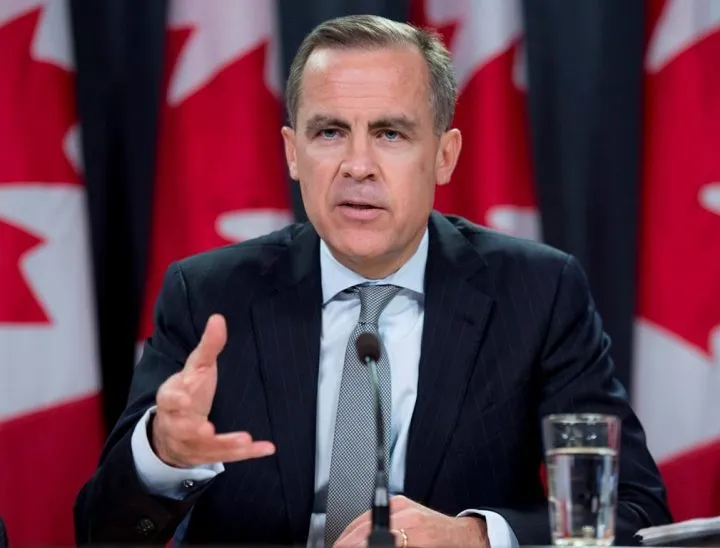Prime Minister Mark Carney has announced that Canada to target H-1B tech workers affected by the United States’ dramatic new visa policy. Following President Donald Trump’s September 19 proclamation imposing a $100,000 fee on new H-1B visas, Canada is positioning itself as an attractive alternative destination for skilled technology professionals who may now find the American dream financially out of reach.
Carney made these strategic comments while addressing reporters in the United Kingdom on September 27, after participating in the 2025 Global Progress Action Summit. His remarks signal a significant opportunity for Canada to capitalize on what many view as a seismic shift in US immigration policy.
Why Canada to Target H-1B Tech Workers: Understanding the Opportunity
“What is clear is the opportunity to attract people who previously would have gotten so-called H-1B visas – and I’m going to simplify one of the big cohorts is in the tech sector,” Carney explained to reporters. “Not as many people are going to get visas to the United States. And these are people with lots of skills, enterprising, and willing to move to work.”
The Prime Minister emphasized that this represents a clear opening for Canada: “So, it’s an opportunity for Canada, and we are going to take that into account, and we are going to have a clear offering on that.”
This isn’t the first time Carney has expressed interest in attracting American-bound tech talent to the north. On September 22, he made similar remarks during a speech before the Council on Foreign Relations in New York City, discussing Canada’s research and AI talent pool and noting that “most of them go to the US.” With a knowing reference to the changing US visa landscape, Carney quipped, “I understand you’re changing your visa policy. Maybe we can hang on to one or two of them.”
The H-1B Fee Shock: What Changed in the United States
On September 19, 2025, President Trump signed a proclamation titled “Restriction on Entry of Certain Nonimmigrant Workers,” fundamentally reshaping the H-1B visa landscape. The declaration requires employers to pay a $100,000 fee for new H-1B visa petitions, marking one of the most dramatic changes to the skilled worker program in decades.
According to the White House fact sheet, the proclamation restricts entry for nonimmigrant workers in specialty occupations unless a substantial payment accompanies their petition. The administration claims the move is designed to curb what it describes as abuse of the H-1B program and protect American workers.
The $100,000 charge is a one-time fee that applies only to new visa petitions and does not affect renewals or current visa holders. However, the steep cost has created significant uncertainty and frustration among tech companies and skilled foreign workers who have long relied on the H-1B pathway to work in the United States.
The tech sector has been particularly impacted, as it heavily depends on H-1B visa holders to fill specialized roles in software development, data science, artificial intelligence, and other high-demand fields. Between April 2022 and March 2023, nearly 15,000 tech workers from India alone moved to Canada, demonstrating an existing pipeline of talent that could expand significantly under the new US restrictions.
How Canada to Target H-1B Tech Workers: Available Immigration Pathways
For skilled foreign nationals impacted by the H-1B changes, Canada offers multiple pathways to work and eventually establish permanent residence. Starting with a Canadian work permit can be a strategic approach, as gaining skilled work experience in Canada strengthens eligibility for economic immigration programs.
The Temporary Foreign Worker Program and Global Talent Stream
Canadian work permits fall under two general programs: the Temporary Foreign Worker Program (TFWP) and the International Mobility Program (IMP).
The TFWP requires a Labour Market Impact Assessment (LMIA), which is documentation proving that hiring a foreign worker won’t negatively impact the Canadian labour market. Within this program, the Global Talent Stream stands out as particularly relevant for tech professionals.
The Global Talent Stream was specifically introduced to help Canadian employers fast-track the hiring of foreign tech talent. It establishes a two-week processing standard for work permit applications for skilled foreign workers in technology fields, making it one of the fastest immigration pathways available.
LMIA-Exempt Options Under the International Mobility Program
The International Mobility Program offers LMIA-exempt work permits, removing a significant barrier for both employers and foreign workers.
In September 2024, Immigration, Refugees and Citizenship Canada (IRCC) introduced a new work permit under the Innovation Stream, a pillar of Canada’s Tech Talent Strategy. This initiative falls under the International Mobility Program. It provides skilled foreign workers with job offers from one of the eight participating employers in the Global Hypergrowth Project, as well as access to an LMIA-exempt work permit.
H-1B Holder Work Permit: A Direct Bridge to Canada
Canada’s Tech Talent Strategy previously included a streamlined work permit specifically designed for H-1B specialty occupation visa holders in the US, facilitating their application to come to Canada. The initiative proved extraordinarily popular, meeting its cap of 10,000 applications in just one day after launching on July 16, 2023.
While this specific program reached capacity quickly, it demonstrates both the demand among H-1B holders for Canadian alternatives and Canada’s willingness to create targeted pathways for this talent pool. Given Carney’s recent comments, similar initiatives may be forthcoming.
Intra-Company Transfers for Tech Multinationals
Foreign nationals working for multinational technology companies have another option: Intra-Company Transferee work permits. This pathway streamlines the process for companies to transfer key employees—including executives, senior managers, or those with specialized knowledge—from an overseas branch to their Canadian office.
This option is particularly valuable for large tech companies with operations in both the United States and Canada, as it allows them to relocate talent without navigating the more complex LMIA process.
Permanent Residence Through Express Entry: A Long-Term Solution
Beyond temporary work permits, foreign nationals can pursue Canadian permanent residence directly through the Express Entry system, which manages applications for three federal economic immigration programs:
- The Federal Skilled Worker Program
- The Canadian Experience Class
- The Federal Skilled Trades Program
To enter the Express Entry pool, candidates must be eligible for at least one of these programs. Once in the pool, they receive a Comprehensive Ranking Score (CRS) based on factors including age, education, work experience, and language proficiency.
STEM Category-Based Selection: An Advantage for Tech Workers
In 2023, Canada launched category-based selection draws to address labour market needs in high-demand sectors. STEM (Science, Technology, Engineering, and Mathematics) is one of the priority categories, giving workers in select STEM occupations an advantage through lower CRS cut-off scores compared to general or Canadian Experience Class draws.
This means tech professionals may receive invitations to apply for permanent residence even if their CRS scores wouldn’t qualify them under general selection rounds. However, the frequency of these draws varies—the most recent STEM category-based selection draw was held on April 11, 2024.
The Strategic Timing: Why Canada Should Target H-1B Tech Workers Now
Canada’s move to attract H-1B tech workers comes at a pivotal moment. The global competition for skilled technology talent has intensified, with artificial intelligence, machine learning, cybersecurity, and other cutting-edge fields experiencing significant talent shortages.
The United States has traditionally dominated this competition, offering higher salaries, access to Silicon Valley’s innovation ecosystem, and a well-established tech industry infrastructure. The new $100,000 H-1B fee fundamentally alters this dynamic, potentially pricing out many employers and making Canada’s immigration pathways comparatively more attractive.
Canada has been systematically building its technology sector, with major tech hubs emerging in Toronto, Vancouver, Montreal, and Waterloo. Companies like Shopify, Hootsuite, and numerous AI research labs have established Canada as a legitimate technology destination, not merely a backup option.
According to USCIS information, the H-1B proclamation represents “an important, initial, and incremental step to reform the H-1B visa program to curb abuses and protect American workers.” However, from Canada’s perspective, it represents an unprecedented opportunity to strengthen its position in the global talent competition.
What to Expect: Canada’s Forthcoming “Clear Offering”
While Prime Minister Carney has confirmed that Canada will develop a “clear offering” for tech workers affected by the H-1B changes, specific details remain undisclosed. Based on his comments and Canada’s existing immigration infrastructure, potential measures could include:
- Expanded or revived H-1B holder work permit programs with higher caps
- Fast-tracked processing for tech workers from specific companies or sectors
- Enhanced Provincial Nominee Programs targeting technology professionals
- Increased STEM category-based Express Entry draws
- Simplified pathways for entrepreneurs and startup founders
- Coordination with Canadian tech companies to identify immediate hiring needs
The emphasis on having a “clear offering” suggests Canada plans to create a well-publicized, easy-to-understand pathway rather than expecting foreign workers to navigate complex immigration systems independently.
Challenges and Considerations for Tech Workers
While Canada presents attractive opportunities, tech professionals considering the move north should be aware of several factors:
Salary Differences: Canadian tech salaries are generally lower than those of their US counterparts, particularly when compared to the rates in Silicon Valley. However, the cost of living in Canadian cities is often lower, and universal healthcare reduces the need for out-of-pocket medical expenses.
Tax Implications: Canada has higher income tax rates than many US states, which affects take-home pay. However, these taxes fund public services including healthcare, education, and social programs.
Climate and Geography: Canadian winters, particularly in cities such as Toronto, Montreal, and Calgary, can be significantly harsher than those in many US tech hubs.
Pathway to Citizenship: Canada offers a relatively straightforward path to citizenship, typically requiring three years of physical presence as a permanent resident. This contrasts with the often lengthy and uncertain path from H-1B status to US green cards.
Quality of Life: Canada consistently ranks highly in quality of life indexes, offering political stability, low crime rates, excellent education systems, and multicultural urban centers.
The Broader Immigration Policy Context
Canada’s move to target H-1B tech workers aligns with a broader immigration strategy. The country has long positioned itself as welcoming to skilled immigrants, using immigration as a tool for economic growth and demographic renewal.
However, Canada’s immigration system has faced recent pressures. The government has made adjustments to temporary foreign worker programs and international student pathways in response to concerns about housing affordability and integration challenges. The focus on high-skilled tech workers represents a targeted approach that addresses economic needs while being politically palatable.
Prime Minister Carney’s background in economics and his previous roles as Governor of both the Bank of Canada and the Bank of England inform his understanding of talent acquisition as a competitive advantage in the global economy. His direct acknowledgment of the US policy change as an opportunity reflects a pragmatic, strategic approach to immigration policy.
Looking Ahead: The Global Competition for Tech Talent
The US H-1B fee increase may prove to be a watershed moment in the global competition for technology talent. Other countries beyond Canada are also watching closely and may introduce their own initiatives to attract skilled workers.
The United Kingdom, European Union nations, Australia, and Singapore all maintain skilled worker programs and may see the current moment as an opportunity to enhance their offerings. However, Canada has several advantages, including geographic proximity to the United States, bilingual English and French language environments, established technology sectors, and a proven track record of successful immigrant integration.
For tech workers affected by the H-1B changes, the coming months will be critical. As Prime Minister Carney indicated, Canada plans to introduce specific measures targeting this talent pool. Those interested in Canadian opportunities should monitor announcements from Immigration, Refugees and Citizenship Canada, explore existing pathways such as the Global Talent Stream, and potentially consult with immigration lawyers or consultants specializing in the technology sector immigration.





